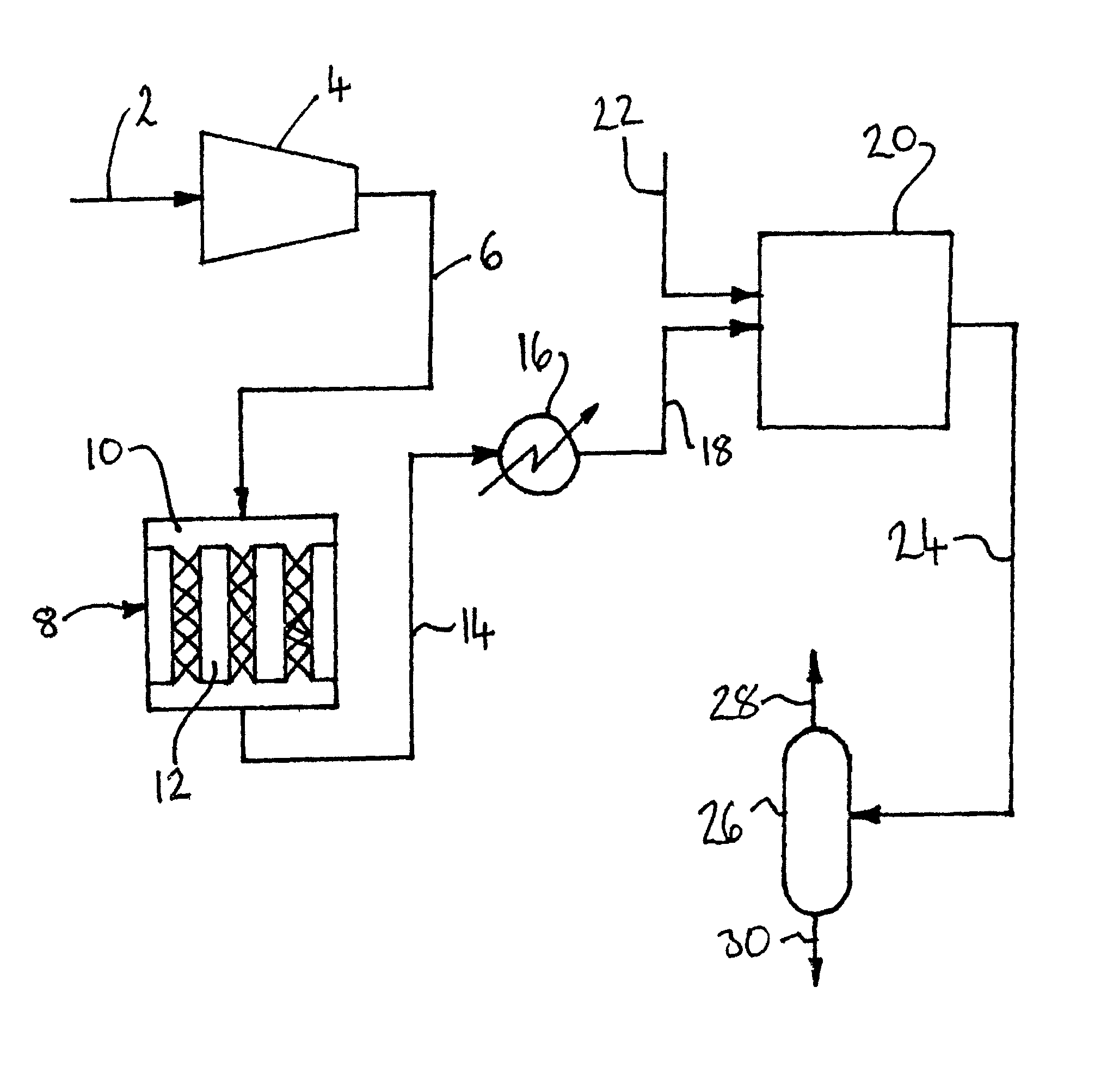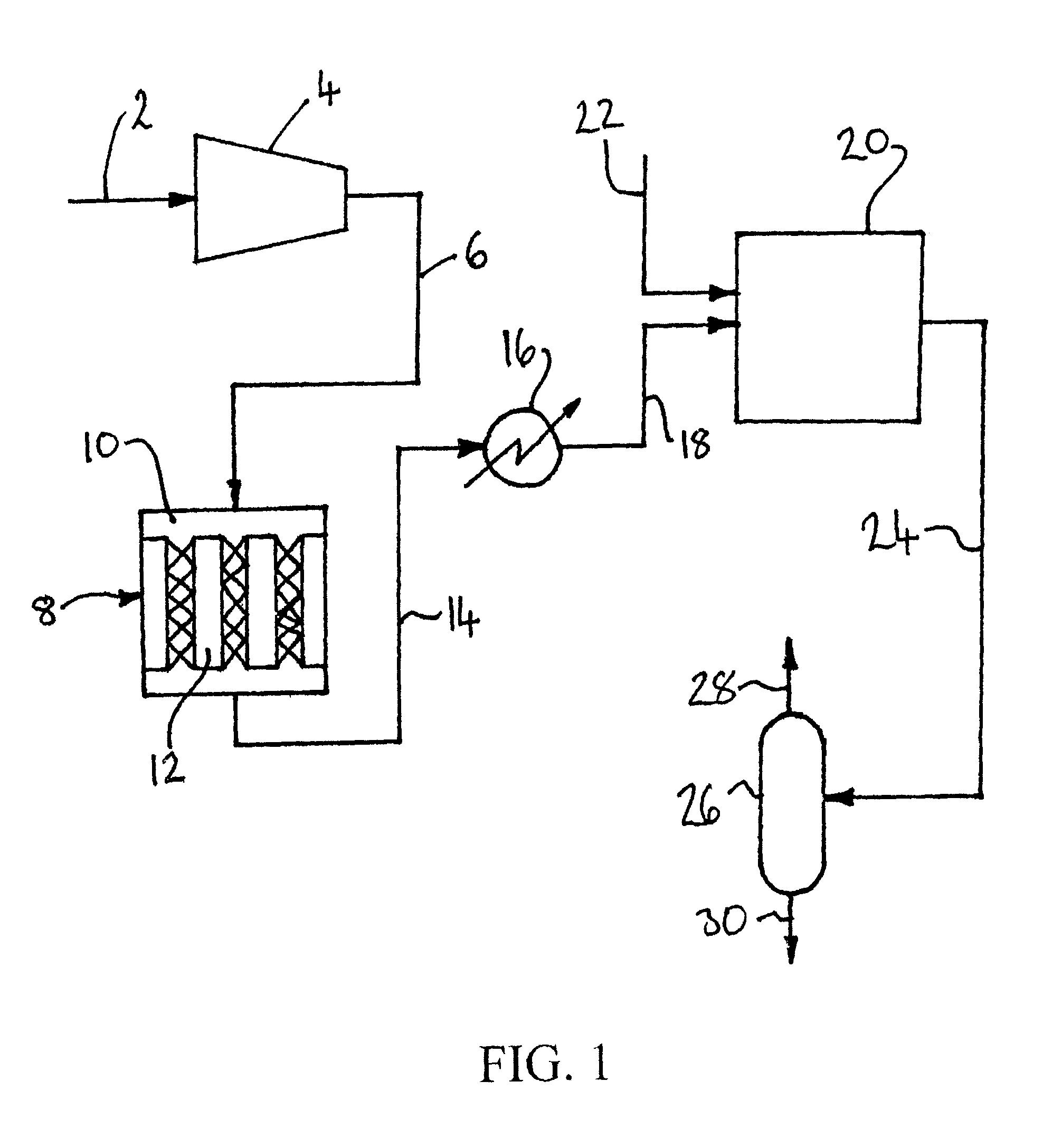Integration of catalytic SO2 oxidation and oxyfuel sour compression
a technology of oxyfuel and so2 oxidation, which is applied in the direction of physical/chemical process catalysts, machines/engines, separation processes, etc., can solve the problems of high combustion temperature, which is not practical in a furnace or boiler, and achieves the reduction of catalyst requirements, reducing the amount of (mixed) acid condensate, and reducing the size
- Summary
- Abstract
- Description
- Claims
- Application Information
AI Technical Summary
Benefits of technology
Problems solved by technology
Method used
Image
Examples
example
[0138]Computer simulations using the ASPEN™ Plus software (version 2006.5; © Aspen Technology, Inc.) have been carried out to compare the process depicted in FIG. 1 (Cases J through L) with corresponding processes only involving either the catalytic oxidation of SO2 in reactor 8 (Cases A though F) or the non-heterogeneous catalytic conversion of SO2 and NOx to sulfuric acid and nitric acid respectively in reactor 20 (Cases G through I).
[0139]In the simulations, the carbon dioxide feed gas had the following composition: 82.37% CO2, 8.5% N2, 4.5% O2, 2.5% H2O, 2% Ar, 1000 ppm SO2, and 300 ppm NO. The elevated pressure was 10 bar (1 MPa), the elevated temperature was 450° C. and the reduced temperature was 20° C. For the purpose of the simulations, it was assumed that:[0140]the catalytic reaction is SO2+½O2→SO3;[0141]there is no conversion of NO to NO2 in the catalytic reactor; and[0142]the catalytic reaction is 1st order with respect to SO2 and zero order with respect to O2.
[0143]The ...
PUM
| Property | Measurement | Unit |
|---|---|---|
| concentration | aaaaa | aaaaa |
| concentration | aaaaa | aaaaa |
| temperature | aaaaa | aaaaa |
Abstract
Description
Claims
Application Information
 Login to View More
Login to View More - R&D
- Intellectual Property
- Life Sciences
- Materials
- Tech Scout
- Unparalleled Data Quality
- Higher Quality Content
- 60% Fewer Hallucinations
Browse by: Latest US Patents, China's latest patents, Technical Efficacy Thesaurus, Application Domain, Technology Topic, Popular Technical Reports.
© 2025 PatSnap. All rights reserved.Legal|Privacy policy|Modern Slavery Act Transparency Statement|Sitemap|About US| Contact US: help@patsnap.com



